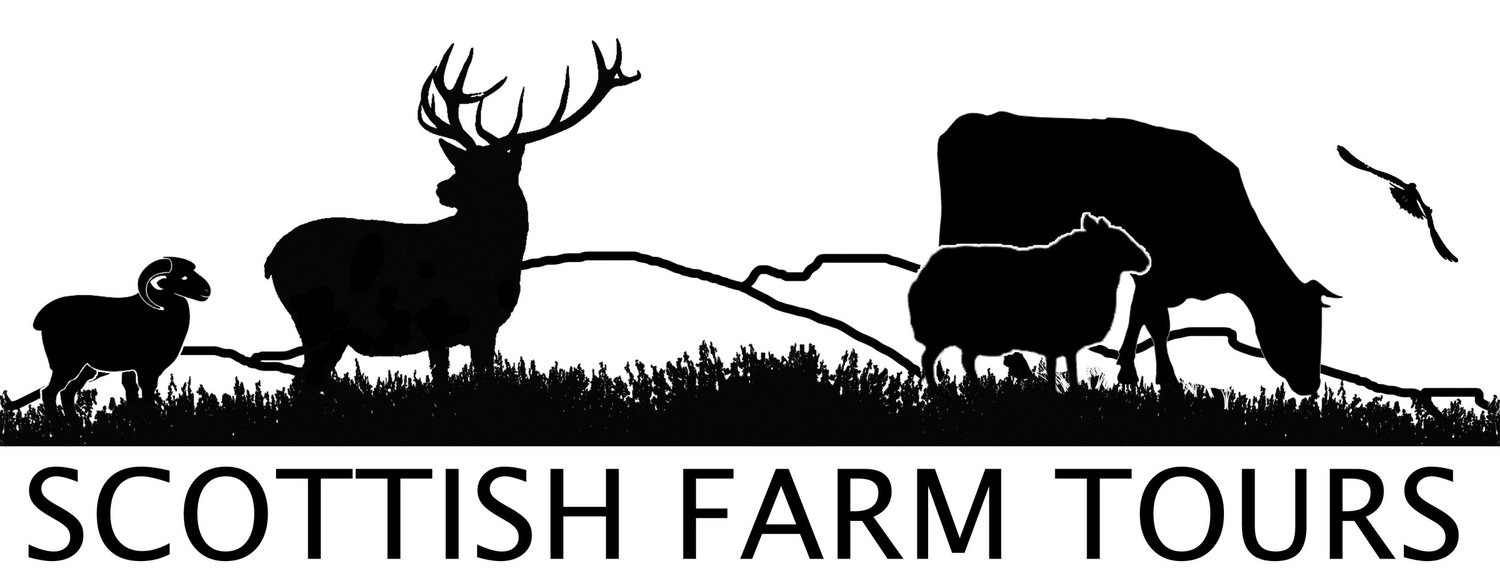Autumn is one of our favourite times of year at Ruthven. Early September brings the annual ewe lamb sale at Huntly, where we sell the majority of our mule ewe lambs. It is a big day for us as it generates a large part of our annual farm income. Prior to the sale the lambs have their fleeces trimmed (along the belly and the underside of the neck) and coloured. Then they are ready for sale.
Mule ewe lambs
Settled on the lorry and ready to go
On the morning at the mart we sort our lambs into pens depending on their quality, the top pen being expected to sell for more than the lower ones. Quality is determined by size and conformation, fleece quality, and to a lesser extent colouring of face and legs. There is a show of lambs on the morning of the sale and this year our top pen gained second prize, which we were very pleased with. Prices were down this year compared to last, but we were pleased in the end to average only £2 a head less than last year, with most of the lambs going to farmers who had bought from us last year and were pleased with how the sheep had gone on to perform.
Once the ewe lambs are away we look forward towards tupping time, which will be the start of a new farming year. The ewes are all brought into the farm and checked individually. Any with missing teeth or damaged udders will be culled from the flock. The rest are “condition scored” – which is a method of grading how fat or thin they are. Thin ones will be kept in-bye on better grass to increase their condition. Over-fat ones will be turned out to the heather hill to lose a bit of weight and fitten up. Two weeks before tupping they all go on to good grass – a process known as “flushing”. This increases the number of eggs that the ewe ovulates and therefore produces more twins and less single births.
Kate and Fly gather in the ewes
The main flock starts tupping in the last week of November, but for some of the pedigree groups the tups go in earlier – in October – so that these lambs are born earlier, outwith the frantic main lambing so we have more time to spend on them, and meaning the lambs are better grown when the summer show season comes round.
Tups wear a raddle harness when working – this holds a coloured crayon which marks the backside of the ewe when the tup serves her. With the smaller groups it means we can have an accurate record of service date and therefore lambing date. With the main flock we change the colour of crayon every 7 days so we can then tell come lambing time which group of ewes will be due in the first week, and which in the second week, and so on. Therefore we know which sheep need to be in the lambing fields or sheds, when.
Suffolk tup wearing a harness
We can tell the ewe at the front has been tupped from the orange mark on her rump.
THE TEAM :
This month it is the turn of Kiwi to star in the blog .
Kiwi
Kiwi is a Kelpie x collie. She is nearly 2 years old, and has lived with us since she was 7 weeks old. She is certainly a character. She has endless energy, and lives life at full speed. Kelpies are Australian sheepdogs that were originally bred to have the stamina and brains to herd sheep all day in the hot climate, with little supervision. They are known for running along on the backs of the sheep to get to where they want to be. As Kiwi is a crossbred, she has inherited all the energy and power of the kelpie, and some of the brains and trainability of the collie, which makes her an asset to our team. (Though the handler has to be on the ball at all times!) Kiwi doesn’t have the finesse to star in our sheepdog demonstrations, but she is invaluable when moving large groups of ewes and bigger lambs. She is a good natured, friendly dog, though a little dominant towards other dogs – the team has a definite pecking order, and Kiwi likes to challenge her place occasionally! But because she is always so happy we all forgive her.
Kate and Kiwi
Kiwi as a puppy








